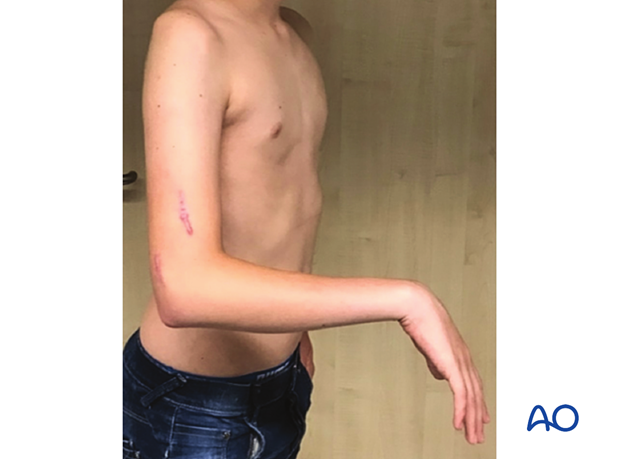Complications and technical failures
1. General considerations
Complications associated with proximal humeral fractures include:
- K-wire track infection
- Growth disturbance
- Malunion
- Axillary nerve injury
- Soft-tissue entrapment
2. K-wire track infection
K-wire track infection is less common in children than in adults. The risk is increased with:
- Tethered skin around K-wires
- Delayed removal of protruding K-wires
3. Growth disturbance
Proximal humeral growth disturbance following a fracture is rare and does not usually cause functional disturbance. Surveillance is therefore less important, apart from high-energy injuries and open fractures.
4. Malunion
Malunion is a rare complication of proximal physeal fractures or partial growth arrest. The patient may have restricted shoulder abduction and corrective osteotomy may be necessary in selective cases.
Recommended reading:
- Ellefsen BK, Frierson MA, Raney EM, et al. Humerus varus: a complication of neonatal, infantile, and childhood injury and infection. J Pediatr Orthop. 1994 Jul-Aug;14(4):479–486.
5. Iatrogenic neurological injury
The axillary nerve may be injured at the time of fracture or during surgical approaches and/or implant insertion.
This may lead to a characteristic sensory loss and reduced abduction power.
Knowledge of the local neurological anatomy is therefore essential.
During insertion of implants, eg, elastic nails, in the distal humeral shaft, the safe zones for the entry points should be respected. Else, the radial nerve may be injured.
This case shows a patient with a proximal metaphyseal fracture stabilized with elastic nails. The entry points were placed too proximally, and the radial nerve has been injured, resulting in paralysis of wrist and finger extension.














